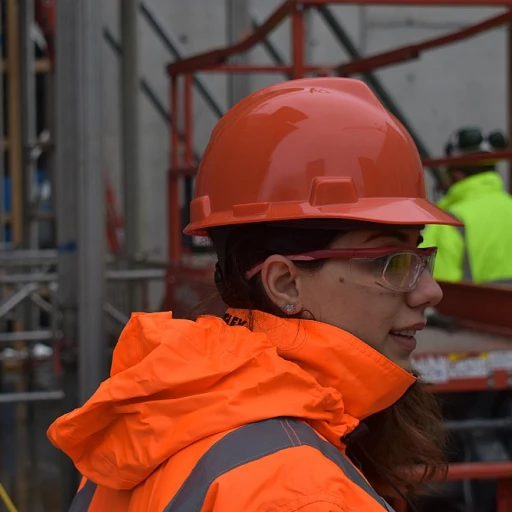
The Role of Incentive Awards in Employee Motivation
The Power of Incentive Awards in Boosting Employee Engagement
Incentive awards have long held a significant role in motivating employees and driving engagement across various sectors. Both informal and formal incentive programs can effectively foster a culture of recognition within organizations, positively influencing how team members perform their roles. When employees feel appreciated and recognized through these awards, there is a natural increase in their motivation to contribute towards achieving company goals. Incentive programs not only reward employees for their hard work but also reinforce a sense of value and belonging within the organization. ### Key Benefits of Implementing Incentive Awards:- Enhancing Productivity: By setting clear award criteria, companies can encourage employees to go above and beyond in their job performance, which can be particularly effective in roles like sales and customer service.
- Building Team Morale: Recognition programs and employee recognition initiatives emphasize team spirit, making employees feel valued and appreciated, and in turn, boosting morale.
- Fostering Loyalty: Employees who feel recognized are likely to develop a stronger loyalty to their employer, reducing turnover rates and cultivating long-term commitment.
Designing Effective Incentive Programs
Crafting Incentive Programs for Maximum Impact
Designing an effective incentive program is pivotal to driving both employee motivation and company success. An incentive that resonates with employees can significantly enhance their engagement and motivation levels. What makes a great incentive is its ability to make employees feel valued and recognized for their efforts.
First and foremost, it’s crucial to understand the goals of the incentive program. Whether it's to boost sales, improve customer service, or enhance team engagement, the desired outcomes should guide every aspect of the program’s design. Involvement of the employees in determining the incentive criteria can be instrumental in ensuring that the award criteria align with their expectations and company objectives.
Rewarding Employees Thoughtfully
A thoughtful approach to rewards and recognition can make all the difference. Consider adopting a flexible rewards model that accommodates different preferences. Some employees might appreciate recognition programs that highlight their achievements in front of their peers, while others might prefer tangible, material rewards.
Moreover, it’s worth exploring different types of incentives such as career development opportunities, flexible work arrangements, or exclusive webinars. The key is variety and relevance—what will most reward employees and inspire them to achieve their goals. For more insights into expressing gratitude to employees effectively, check out this resource.
Incentives and Recognition as a Continuous Effort
Lastly, remember that a successful incentive program should not be a one-time effort but an ongoing initiative. Consistent recognition keeps employees engaged and strengthens their loyalty to the company. Regularly updating and communicating about the program helps sustain momentum and ensures that team members feel appreciated and motivated.
Measuring the Success of Incentive Awards
Evaluating the Impact of Incentive Awards on Your Workforce
- Set Clear Objectives: Define specific goals that your incentive program aims to achieve. Whether the focus is on increasing sales performance, improving customer service, or boosting employee engagement, these objectives should be measurable and aligned with the company’s overall mission. By setting clear criteria, employees can see a direct correlation between their efforts and the rewards they receive.
- Monitor Employee Participation: Analyzing employee participation rates can provide insights into the success of your incentive programs. High participation indicates that employees find value in the program, while low involvement might suggest that the rewards or structure need reassessment. Ensure that all team members feel appreciated and included, which can foster a culture of engagement and motivation within the company.
- Gather Feedback: Incorporate feedback mechanisms into your program. By soliciting input from employees regularly, organizations can fine-tune initiatives to cater better to their staff’s needs. Feedback helps in recognizing patterns in what makes employees feel valued and appreciated, thus, enhancing the overall recognition experience.
- Analyze Performance Metrics: Dive into key performance indicators to identify any uptick in performance post-incentive program implementation. Metrics such as increased sales figures, improved customer service ratings, and higher retention rates can serve as useful indicators of success. A great incentive award program should consistently lead to tangible improvements in these areas.
- Assess Long-term Engagement: The ultimate goal is to realize sustained employee engagement. Look beyond immediate wins and focus on long-term impacts of the incentives in place. Programs that maintain their allure over long periods are typically those that are a reflection of employees’ evolving needs and the company’s dynamic culture.
Challenges in Implementing Incentive Awards
Overcoming Obstacles in Award Implementation
The journey to successfully implement incentive awards within a company is not without its hurdles. While incentive awards can significantly boost employee motivation and enhance recognition, challenges arise in creating programs that truly resonate with employees. Recognizing these potential pitfalls can set a company up for long-term success in its incentive programs.
One of the primary challenges is ensuring that the award criteria are both fair and transparent. Employees need to feel confident that the process of receiving an award is equitable and based on clear performance metrics. Without this, there can be perceptions of favoritism, leading to disengagement rather than the desired increase in motivation.
Another hurdle is maintaining relevance over time. An incentive program that might be effective today may not work tomorrow. It’s crucial for companies to regularly review their programs, keeping them aligned with current objectives while taking into account employee feedback.
Budgetary constraints can also pose significant challenges. The cost of implementing a meaningful rewards recognition program can be substantial, which might deter some businesses from launching or sustaining such initiatives. However, there are creative ways to show appreciation without overextending budgets, ensuring employees feel valued and appreciated.
Additionally, aligning incentive awards with company culture is pivotal. Programs that do not reflect the core values or mission of a company risk being perceived as insincere. Therefore, aligning these incentives with the company ethos helps in reinforcing a unified organizational culture.
Finally, addressing diversity and inclusion is another essential aspect of incentive awards. Programs should be designed in a way that accounts for diverse employee needs and aspirations, ensuring that all team members have equal opportunities to earn recognition. This approach not only supports inclusivity but strengthens overall team engagement.
To overcome these challenges, companies can consider integrating regular team feedback sessions, allowing employees to voice their opinions on the incentive programs. By doing so, businesses can align the rewards more closely with the wants and needs of their employees.
Case Studies: Successful Incentive Award Programs
Examining Real-World Successes in Incentive Programs
To truly understand the transformative potential of incentive awards in boosting employee engagement and performance, we can turn to several real-world examples where companies have effectively implemented incentive programs. These cases provide valuable insights into how a well-structured awards program can make employees feel more valued and appreciated. One leading global company in the technology sector introduced a performance-based incentive program that not only encouraged employees to exceed targets but also fostered a sense of recognition among team members. By setting clear award criteria and maintaining transparency in the program, team members experienced a significant rise in morale and productivity. This shift translated into impressive sales growth, showcasing the power of connecting recognition with tangible business outcomes. In another instance, a retail giant employed a customer service-focused incentive award scheme. Team members were rewarded for exceptional performance in customer service, demonstrating that recognition programs can positively impact day-to-day operations. Employees felt appreciated for their hard work and were motivated to actively engage with their roles, leading to enhanced overall company performance. Furthermore, a noteworthy example comes from a healthcare organization that developed a comprehensive rewards recognition system. They strategically used awards to recognize both individual and team efforts, which significantly boosted employee motivation and job satisfaction. The company saw not only increased employee retention but also an improvement in patient care quality. Through these successful programs, it becomes evident that when companies invest in thoughtful and tailored incentive awards, they pave the way for a more committed and dedicated workforce. The insights gained from analyzing these cases can serve as a guide for other companies looking to create or refine their incentive programs, fostering an environment where employees feel valued and empowered to thrive. As organizations continue to innovate in their approaches to incentivization, the lessons learned from these successful award programs will undoubtedly play a crucial role in future trends, driving the evolution of employee recognition strategies.Future Trends in Incentive Awards
Emerging Trends in Incentive Award Programs
The landscape of employee incentive awards is evolving rapidly, driven by a growing emphasis on employee recognition and engagement, and the dynamic needs of companies pursuing improved performance metrics. Businesses are increasingly tailoring their programs to incorporate new trends that resonate with diverse employee groups and industry demands. Here's a look at what's shaping the future of incentive programs:- Customization and Personalization: As the workforce becomes more diverse, incentive programs are increasingly focusing on personalization. Tailoring awards and recognition to meet the specific preferences of individual team members helps ensure employees feel valued and appreciated. This shift towards more personalized incentive structures reflects a broader trend towards employee-centric work environments.
- Focus on Non-Monetary Rewards: While monetary bonuses remain popular, there's a burgeoning interest in non-monetary rewards that promote employee engagement, such as personalized recognition programs, workshop and webinar watch certificates, or flexible work arrangements. These non-monetary incentives often create deeper emotional connections and long-term loyalty.
- Integration with Technology: Technological advancements are transforming how companies implement incentive awards. Tools and platforms that streamline the management of these programs help track performance, collate employee feedback, and adapt quickly to changing needs. Employers can use technology to facilitate award criteria assessments and ensure the program remains relevant and effective.
- Emphasis on Team-Based Incentives: Recognizing the power of collective effort, there's a growing focus on team-based incentive awards, particularly in customer service and sales roles. This approach not only bolsters teamwork but also cultivates a stronger sense of community within the company.
- Sustained Engagement through Continuous Recognition: To maintain momentum and high morale, continuous recognition is being favored over sporadic large awards. Regular touchpoints of appreciation and recognition help keep employees engaged and motivated throughout the year.
- Greater Alignment with Company Values: Modern incentive programs are increasingly aligning their rewards with company values. For example, organizations emphasizing sustainability might offer eco-friendly products or experiences as awards, while those valuing community engagement might provide opportunities to participate in community service projects as a reward for performance.













